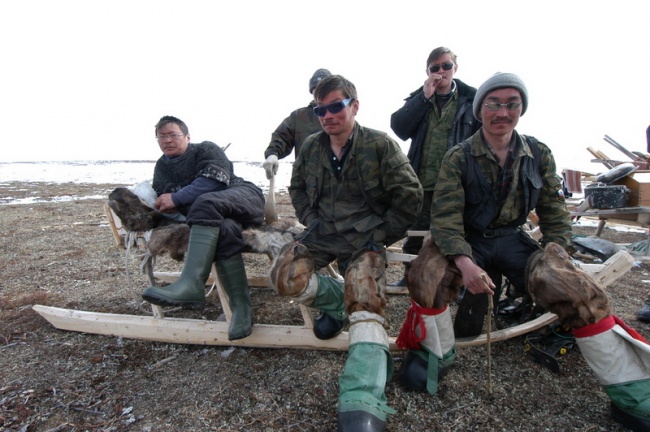Norway visa rules worry indigenous peoples

Andrey Vokuev in Naryan-Mar, Russia, fears for the cooperation between indigenous peoples.
Next week, applicants from the Nenets tundra will have to fly to Arkhangelsk to give fingerprints to get a Schengen visa.
Fingerprints will be required for almost all Russian visa applicants for visa to Norway from September 14th. Children under 12 years or people who physically cannot provide finger scans are excepted.
No problem for people living in Murmansk or Arkhangelsk, as they can just turn up at the Norwegian visa centre, or at the Consulate General in Murmansk. The challenge will be for everyone living in remote areas of Barents Russia.
Like in Naryan-Mar where Andrey Vokuev lives. Arkhangelsk is a 1h 35 flight from the town on the far northern Nenets tundra.
“I think the situation with new visa rules will have very negative influence for the cooperation with participants from remote areas like the Nenets Autonomous Okrug,” says Vokuev to BarentsObserver.
Over the last 15 years, Andrey Vokuev has from his one-manned Barents information office in Naryan-Mar facilitated for people-to-people cooperation with northern Norway. Special focus goes to the indigenous peoples’ cooperation, between the Nenets and the Sami.
Expensive tickets, long stay
“Air ticket from Naryan-Mar to Arkhangelsk costs about 16,000 rubles (€210) and staying in a hotel in Arkhangelsk during two weeks costs about 21,000 rubles (€280),” Andrey Vokuev explains.
“I think not all participants in the cooperation, especially the indigenous peoples, can find an extra €500 and an extra 14 days waiting for the visa process.”
Norway’s newly opened visa centre in Arkhangelsk requires two weeks from the delivery of applications to the visa is delivered. In special occasions, applicants can pay extra to speed up the process, but Vokuev believes not all indigenous peoples have the means to pay extra.
Counter measures
At Norway’s Consulate General in Murmansk, the staff is very aware of the challenges the introduction of obligatory fingerprints will impose on applicants from far away locations in the Russian north.
“We have thought of some solutions, but so far we are awaiting answer from the Foreign Ministry. If our plans get approved, I will inform about that,” says Marit Egholm Jacobsen. She is head of the visa section is in charge of the introduction of next week’s VIS (Visa Information Systems) with biometric for applicants in Barents Russia.
Marit Egholm Jacobsen do not want to elaborate on what measures are planned to counter the trouble the fingerprint demand impose to applicants in remote places.
Expects drop in visitors to Norway
Naryan-Mar is not the only location in the Barents Region with long travel distance to the nearest visa centre. Cities like Kotlas and Velsk are 19 and 13 hours by train away from Arkhangelsk. If you lives in Kandalakhsa or Nikel on the Kola Peninsula, you should also count a day in travel back and forth to the visa centre in Murmansk.
In Naryan-Mar, Andrey Vokuev expect a drop in general travels to Norway.
“I helped 43 people in 2014 and 37 people in 2015 with their visa applications to Norway. That was both people living here in Naryan-Mar and people living in different okrug settlements.”
Vokuev has one wish to the Norwegian visa authorities. “I hope they can change the rules so that applicants participating in the Barents cooperation can apply for visa to Norway also in Moscow or St. Petersburg, not only in Murmansk or Arkhangelsk.”
Air tickets to Moscow or St. Petersburg is cheaper than to Arkhangelsk.
According to the new rules, frequent travellers to the Schengen Area do not have to give new finger scans every time they apply for a new visa. Once finger scans are stored in VIS, they can be re-used for further visa applications over a 5-year period.
Related stories from around the North:
Canada: Should Canada have a plan for climate refugees?, Radio Canada International
Finland: Most asylum seekers arrive in Finland via Lapland, Yle News
Norway: Refugees find Arctic gate to Schengen, Barents Observer
Russia: Looking back at the 2010 Norway – Russia deal on Arctic borders, Barents Observer



